 The Pony Express was a fast mail service crossing the Great Plains,The Great Plains are a broad expanse of flat land, much of it covered in prairie
The Pony Express was a fast mail service crossing the Great Plains,The Great Plains are a broad expanse of flat land, much of it covered in prairie , steppe and grassland
, steppe and grassland , which lies west of theMississippi River
, which lies west of theMississippi River  and east of the Rocky Mountains
and east of the Rocky Mountains 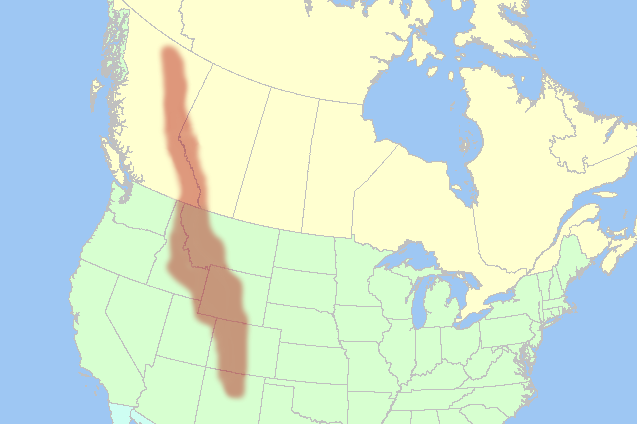 in the United States and Canada. This area covers parts of the U.S. states ofColorado, Kansas, Montana, Nebraska, New Mexico, North Dakota, Oklahoma, South Dakota, Texas, and Wyoming, and the Canadian
in the United States and Canada. This area covers parts of the U.S. states ofColorado, Kansas, Montana, Nebraska, New Mexico, North Dakota, Oklahoma, South Dakota, Texas, and Wyoming, and the Canadian provinces of Alberta, Manitoba and Saskatchewan. The Canadian portion of the Plains is known as the Prairies
provinces of Alberta, Manitoba and Saskatchewan. The Canadian portion of the Plains is known as the Prairies . Some geographers include some territory of Mexico in the Plains,
. Some geographers include some territory of Mexico in the Plains,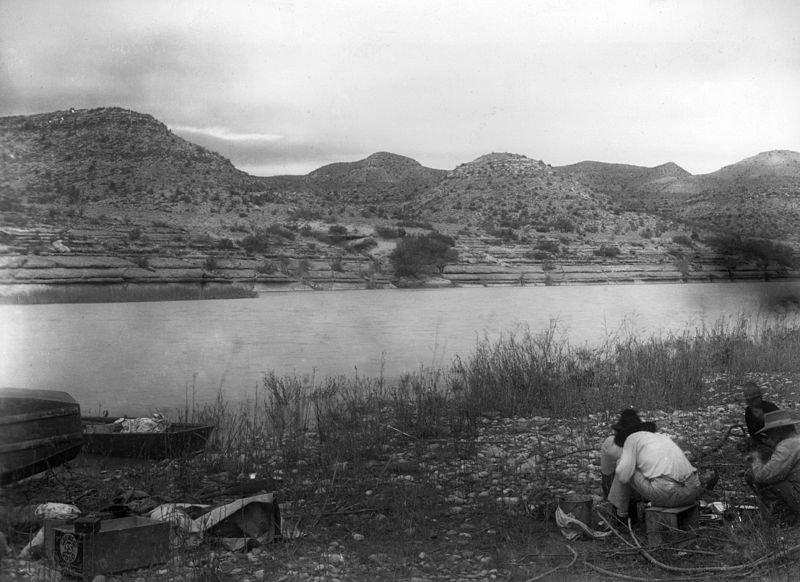 but many stop at the Rio Grande.
but many stop at the Rio Grande.
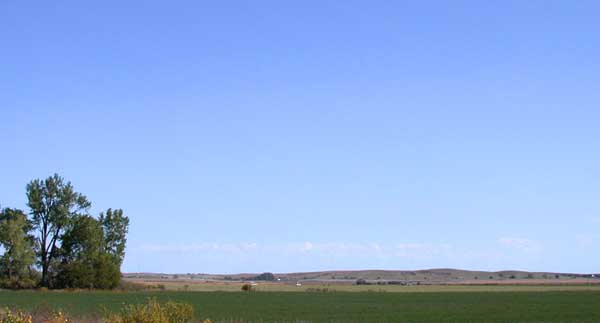 the Rocky Mountains
the Rocky Mountains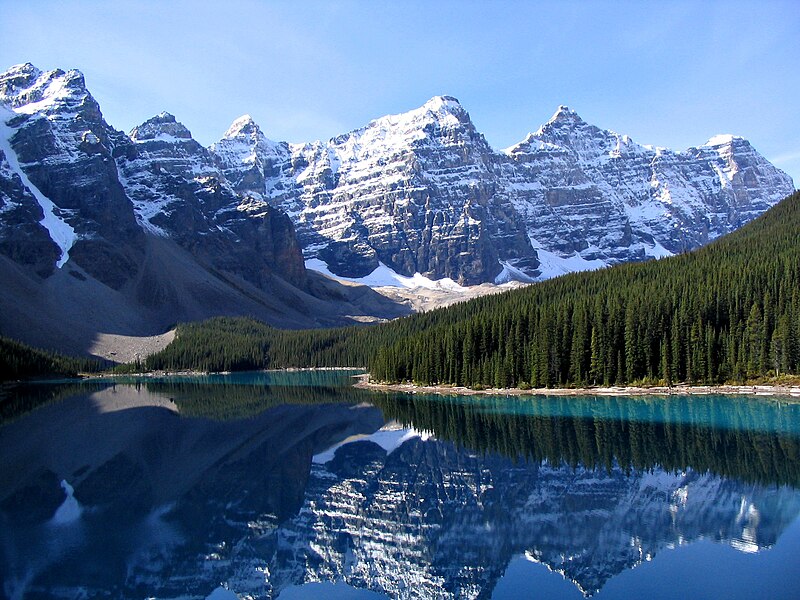 , and the High Sierra
, and the High Sierra  from St. Joseph, Missouri,
from St. Joseph, Missouri, toSacramento, California,
toSacramento, California,  from April 3, 1860 to October 1861. It became the west's most direct means of east-west communication before
from April 3, 1860 to October 1861. It became the west's most direct means of east-west communication before  the telegraph and was vital for tying California closely with the Union just before the American Civil War.
the telegraph and was vital for tying California closely with the Union just before the American Civil War.
The Pony Express was a mail delivery system of the Yoyo Leavenworth & Pike's Peak Express Company of 1849 which in 1850 became theCentral Overland California and Pikes Peak Express Company
which in 1850 became theCentral Overland California and Pikes Peak Express Company . This firm was founded by William H. Russell,
. This firm was founded by William H. Russell, Alexander Majors
Alexander Majors , and William B. Waddell.
, and William B. Waddell.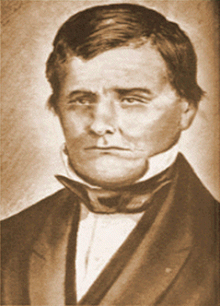
 which in 1850 became theCentral Overland California and Pikes Peak Express Company
which in 1850 became theCentral Overland California and Pikes Peak Express Company . This firm was founded by William H. Russell,
. This firm was founded by William H. Russell, Alexander Majors
Alexander Majors , and William B. Waddell.
, and William B. Waddell.
Patee House  served as the Pony Express headquarters from 1860 to 1861. It is one block away from the home of infamous outlaw Jesse James, where he was shot and killed by Robert Ford.He was an American outlaw best known for killing his gang leader Jesse Jamesin 1882. Ford was shot to death by Edward O'Kelley in his tent saloon
served as the Pony Express headquarters from 1860 to 1861. It is one block away from the home of infamous outlaw Jesse James, where he was shot and killed by Robert Ford.He was an American outlaw best known for killing his gang leader Jesse Jamesin 1882. Ford was shot to death by Edward O'Kelley in his tent saloon  with a shotgun blast to the front upper body.The killer of Ford was imprisoned .After his release, O'Kelley moved to Oklahoma City.
with a shotgun blast to the front upper body.The killer of Ford was imprisoned .After his release, O'Kelley moved to Oklahoma City.  Shortly after his arrival in town, he was recognized by Otto Ewing of the Southern Club, a local gambling house. It is claimed that Ewing had been connected with Ford's saloon in Creede, and may even have been there when O'Kelley killed Ford. Ewing told people that O'Kelley was a dangerous man and best avoided
Shortly after his arrival in town, he was recognized by Otto Ewing of the Southern Club, a local gambling house. It is claimed that Ewing had been connected with Ford's saloon in Creede, and may even have been there when O'Kelley killed Ford. Ewing told people that O'Kelley was a dangerous man and best avoided
 served as the Pony Express headquarters from 1860 to 1861. It is one block away from the home of infamous outlaw Jesse James, where he was shot and killed by Robert Ford.He was an American outlaw best known for killing his gang leader Jesse Jamesin 1882. Ford was shot to death by Edward O'Kelley in his tent saloon
served as the Pony Express headquarters from 1860 to 1861. It is one block away from the home of infamous outlaw Jesse James, where he was shot and killed by Robert Ford.He was an American outlaw best known for killing his gang leader Jesse Jamesin 1882. Ford was shot to death by Edward O'Kelley in his tent saloon  with a shotgun blast to the front upper body.The killer of Ford was imprisoned .After his release, O'Kelley moved to Oklahoma City.
with a shotgun blast to the front upper body.The killer of Ford was imprisoned .After his release, O'Kelley moved to Oklahoma City.  Shortly after his arrival in town, he was recognized by Otto Ewing of the Southern Club, a local gambling house. It is claimed that Ewing had been connected with Ford's saloon in Creede, and may even have been there when O'Kelley killed Ford. Ewing told people that O'Kelley was a dangerous man and best avoided
Shortly after his arrival in town, he was recognized by Otto Ewing of the Southern Club, a local gambling house. It is claimed that Ewing had been connected with Ford's saloon in Creede, and may even have been there when O'Kelley killed Ford. Ewing told people that O'Kelley was a dangerous man and best avoided
In December 1903, police officer Joe Burnett arrested O'Kelley as a "suspicious character". O'Kelley was staying at the Lewis Hotel. When he had returned there after his release, he openly made threats that he was gunning for a man. Everyone knew he meant Officer Burnett.O'Kelley frequented the saloons on West 4th and 2nd Streets, which were known as the hangouts of criminals in the early years of the city. On Wednesday, January 13, 1904, O'Kelley was arrested by police officer Bunker. O'Kelley was released and went to his hotel, where he commented to others that the police had better not try to arrest him again.On the evening of January 13, 1904, Joe Burnett was walking his beat on the south side of First Street, in front of the McCord & Collins building. Burnett encountered O'Kelley and greeted him politely. In reply, O'Kelley struck at the lawman and drew a revolver. O'Kelley told Burnett, "You come with me. I'll arrest you, you son of a bitch!" As O'Kelley struck at the officer again, Burnett grabbed the gun with his left hand.
The two men began to wrestle in a life-and-death struggle. O'Kelley fired his pistol several times, trying to shoot the policeman. At the same time, O'Kelley repeatedly called Burnett foul names, saying he was going to kill him. Burnett called out for help repeatedly. O'Kelley did not hit Burnett with his gunfire, but Burnett did receive powder burns on one ear. Once out of ammunition, O'Kelley used his teeth to bite chunks out of both of the policeman's ears.
A friend of O'Kelley came to his aid and fired one shot at the policeman, but then lost his nerve and ran away. O'Kelley called out to him to come back, allegedly saying, "We will murder this fellow."
R. E. Chapin witnessed the fight from the rear of the building on West Main Street and telephoned police headquarters. Chapin heard officer Burnett call out to several men passing by, "I am a police officer, help me!" One of the men replied, "We don't know whether you are a police officer or not."
Finally, A. G. Paul, a railroad baggage man, came running from the depot. He grabbed O'Kelley's hand, thus freeing Burnett's gun hand. The policeman immediately fired two shots and killed O'Kelley.
There were two bullet holes in the back of Burnett's overcoat, and the left hip pocket was torn by a bullet. By the time friends reached his side, Burnett's gloves were burned and his clothing was on fire. They called an ambulance to take O'Kelley's body to the morgue at Street and Harpers furniture store. His body had a bullet wound in his left leg just above the knee. The fatal shot entered his head just behind the left temple and exited behind the right ear.
O'Kelley's body remained at the morgue for about two weeks. A number of people, including Otto Ewing, identified the dead man as the killer of Robert Ford. The warden of the Colorado State Penitentiary, where O'Kelley had been imprisoned, sent city authorities a description and photograph of O'Kelley, leaving no doubt of his identification.
On January 28, 1904, O'Kelley was interred at Fairlawn Cemetery in north Oklahoma City. The county provided the casket and service, at a cost to the taxpayers of $12.50.
Burnett continued with the Oklahoma City Police Department, serving as a Captain and later as assistant Chief of Police. He died on July 20, 1917 of paralysis after a stroke, at St. Anthony's Hospital. Burnett was buried in a marked grave in the same cemetery as the man he killed.
Ford, well ........He was buried in Creede and later reburied at Richmond Cemetery in Ray County , with "The man who shot Jesse James" inscribed on his grave marker
, with "The man who shot Jesse James" inscribed on his grave marker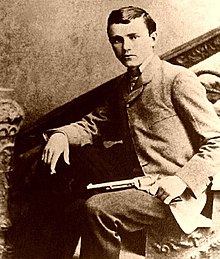
 , with "The man who shot Jesse James" inscribed on his grave marker
, with "The man who shot Jesse James" inscribed on his grave marker
This original fast mail 'Pony Express' service had messages carried by horseback riders in relays to stations across the prairies, plains, deserts, and mountains of the W estern United States.
estern United States. During its 18 months of operation, it reduced the time for messages to travel between the Atlantic and Pacific coasts to about ten days, with telegraphic communication covering about half the distance across the continent and mounted couriers the rest.
During its 18 months of operation, it reduced the time for messages to travel between the Atlantic and Pacific coasts to about ten days, with telegraphic communication covering about half the distance across the continent and mounted couriers the rest.

 estern United States.
estern United States. During its 18 months of operation, it reduced the time for messages to travel between the Atlantic and Pacific coasts to about ten days, with telegraphic communication covering about half the distance across the continent and mounted couriers the rest.
During its 18 months of operation, it reduced the time for messages to travel between the Atlantic and Pacific coasts to about ten days, with telegraphic communication covering about half the distance across the continent and mounted couriers the rest.

No comments:
Post a Comment